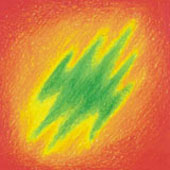'Order refers to the degree and the kind of lawfulness governing the relations among parts of the representations. It applies to the makeup of each part within itself'
___Maldanado Y and Bonseipe G
Higher Level of Order:
A relatively high degree of order seems to be the key factor underlying the characteristics inherent in the abstraction of representation.
'Order refers to the degree and the kind of lawfulness governing the relations among parts of the representations. It applies to the makeup of each part within itself'
___Maldanado Y and Bonseipe G
It applies to the over-all theme or structure, to which the relationship of all parts must confirm; it also applies to the makeup of each part within itself.
The visual principles that need to be explored to achieve a relatively high level of order are factors such as:
• Less visual details
• Simplicity of forms
• Recurrence of forms
• Alignment to grids
• Symmetry
• Balance of figure and ground.
At the next level, the order is influenced by visual features such as:
• the use of shapes that are simple, smoothened, geometric;
• textures that are even;
• tonal variations that are minimal;
• orientations along the horizontal, the vertical and diagonal axis;
• and size variations that are modular.
At the third level, elements such as lines that are used as outlines and in turn act as efficient containers of information, are treated in manner of having an orderly even thickness, a geometric linearity or circularity and are constrained in its direction to the major axis or the diagonal.
In Arnheim's opinion 'Order tends to reduce complexity and requires elimination of details that do not fit the principles determining the order'(1966).
The above-mentioned attributes that modify order bring about visual uniformity within and across images apart from restricting the information to the necessary details alone, as well as increasing the graphic quality of the representation.


